The 6 Essential Exercises Everyone Should Know How to Do
You've got a million options, but fitness experts say these are the moves to focus on.
By Corrie Pikul
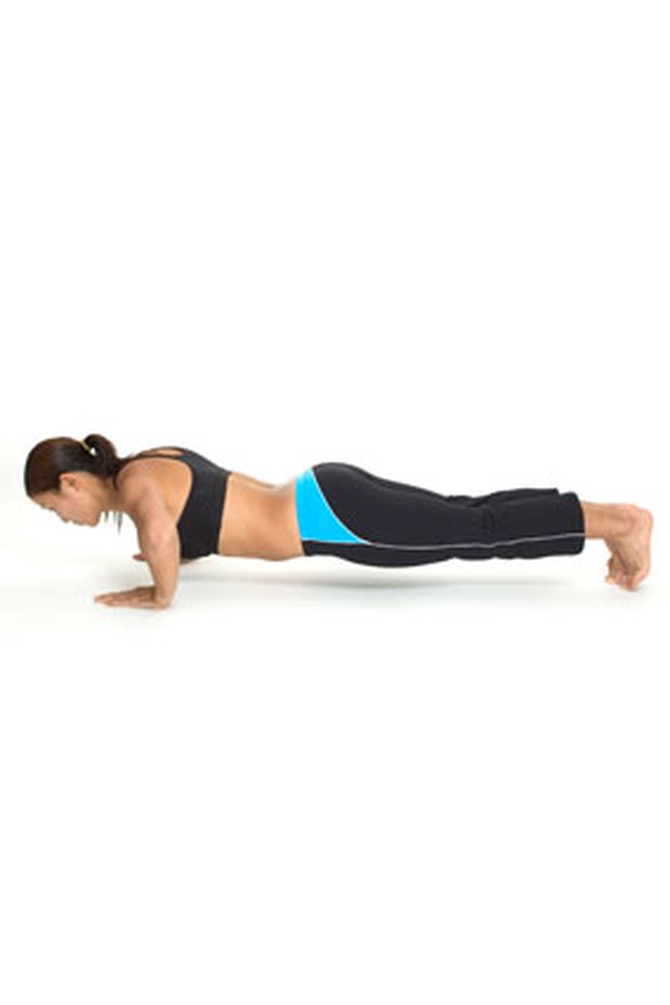
Photo: Thinkstock
Must-Know Exercise 1: The Push-Up
Why: Earlier this year, the American College of Sports Medicine released what was basically a "get fit" list to help fitness pros devise routines for clients, says Carol Ewing Garber, PhD, an associate professor of movement science at Columbia University. We asked Garber, who co-wrote the guidelines, to give us the basics. Her first pick was the push-up.
Do: You can do these on your toes or knees, or try them standing with your hands on the wall. Your arms should be straight but not locked, abs tight, back in a straight line. Lower until your arms are bent 90 degrees, then push back up.
Don't: Your midsection isn't the only part of your body that wants to sag; you may also notice your chest sinking toward the ground as your shoulders hunch up, says Jessica Matthews, an exercise physiologist for the American Council on Exercise. To improve shoulder stability, push through the heel of the palms as well as the outer surface of the hand.
Do: You can do these on your toes or knees, or try them standing with your hands on the wall. Your arms should be straight but not locked, abs tight, back in a straight line. Lower until your arms are bent 90 degrees, then push back up.
Don't: Your midsection isn't the only part of your body that wants to sag; you may also notice your chest sinking toward the ground as your shoulders hunch up, says Jessica Matthews, an exercise physiologist for the American Council on Exercise. To improve shoulder stability, push through the heel of the palms as well as the outer surface of the hand.
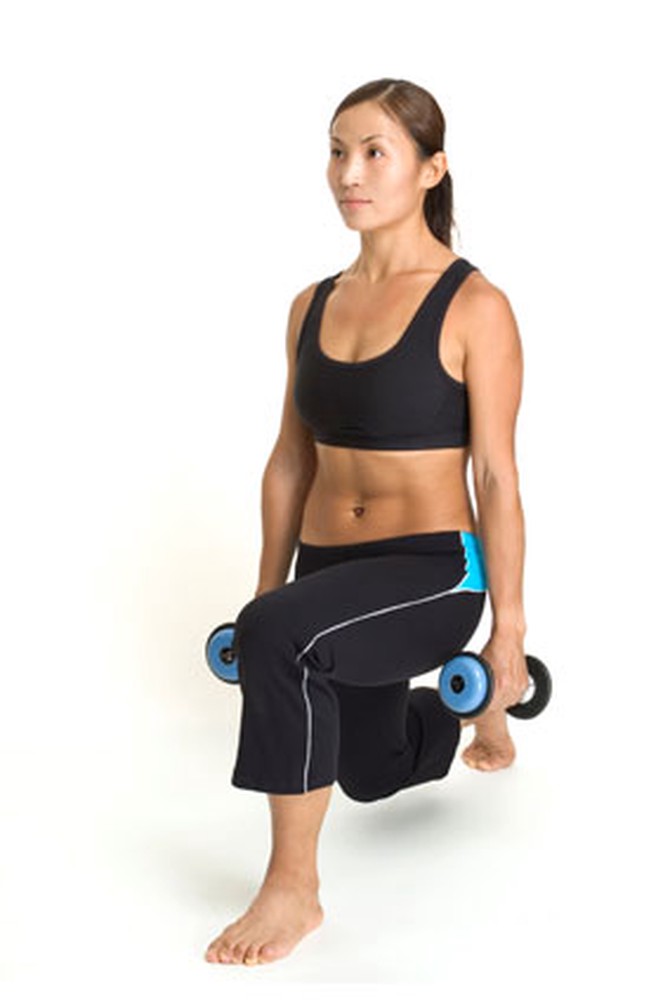
Photo: Thinkstock
Must-Know Exercise 2: The Lunge
Why: This exercise is as close to perfect as you can get, says Garber. It has the potential not only to build muscle and prevent injury but also to make you more agile and prevent stress fractures and osteoporosis (both more common in women than men). If you lunge with a barbell on your shoulders, you'll turn this into a weight-bearing exercise that can strengthen bones.
Do: With your feet hip-width apart, step forward and land with your heel first. Lower until the front thigh is parallel to the ground; then push off the front heel to stand back up. Repeat with the opposite leg.
Don't: Many people take a giant step forward, which Matthews says puts the emphasis on the quads. She recommends the same stride length as if climbing up stairs. "You're doing it right if you feel it in your glutes and hamstrings as well as your quads," she says. Lean forward slightly and never let your back knee hit the ground.
Do: With your feet hip-width apart, step forward and land with your heel first. Lower until the front thigh is parallel to the ground; then push off the front heel to stand back up. Repeat with the opposite leg.
Don't: Many people take a giant step forward, which Matthews says puts the emphasis on the quads. She recommends the same stride length as if climbing up stairs. "You're doing it right if you feel it in your glutes and hamstrings as well as your quads," she says. Lean forward slightly and never let your back knee hit the ground.
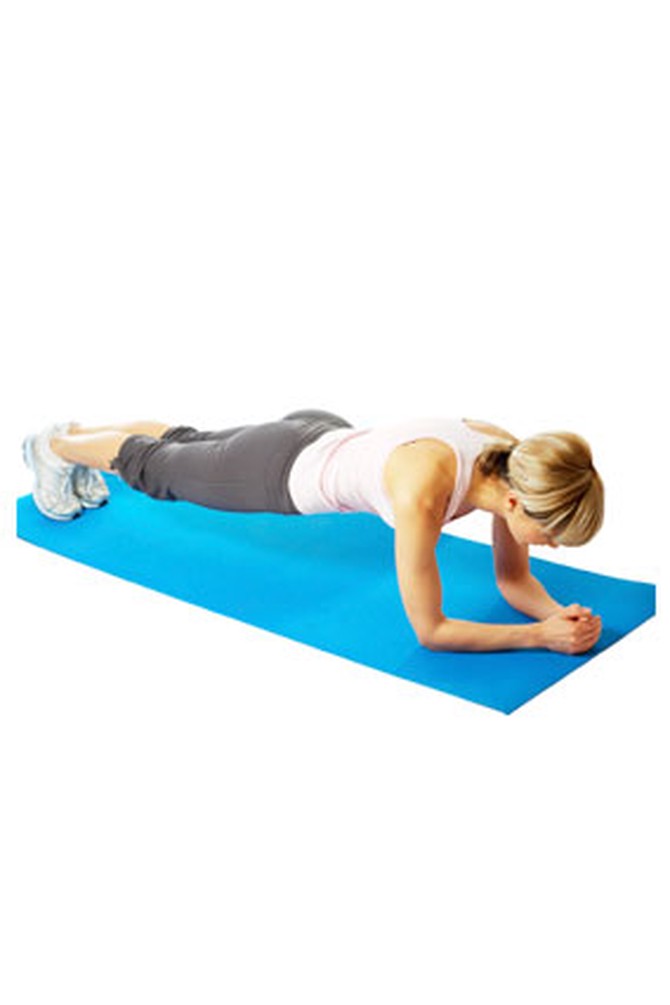
Photo: Thinkstock
Must-Know Exercise 3: The Plank
Why: Have you ever felt a painful twinge in your abs while getting out of your car? This may be because you've been neglecting your core. The plank uses all the important core muscles (unlike crunches, which focus on the lower abs).
Do: Start on your knees with your elbows on the floor directly under your shoulders, your forearms on the ground, your palms flat. Slowly rise up onto your toes and straighten your legs. Try not to drop your head or raise your backside, and relax your shoulders away from your ears. Hold for 10 to 30 seconds; then lower yourself back down. To make these easier, stay on your knees.
Don't: As people focus on holding this pose, their form often goes out the window, says Matthews. Prevent the belly from sagging by tightening your core as if you're expecting a punch in the stomach. "That engagement also helps with spinal stability," she says.
Do: Start on your knees with your elbows on the floor directly under your shoulders, your forearms on the ground, your palms flat. Slowly rise up onto your toes and straighten your legs. Try not to drop your head or raise your backside, and relax your shoulders away from your ears. Hold for 10 to 30 seconds; then lower yourself back down. To make these easier, stay on your knees.
Don't: As people focus on holding this pose, their form often goes out the window, says Matthews. Prevent the belly from sagging by tightening your core as if you're expecting a punch in the stomach. "That engagement also helps with spinal stability," she says.
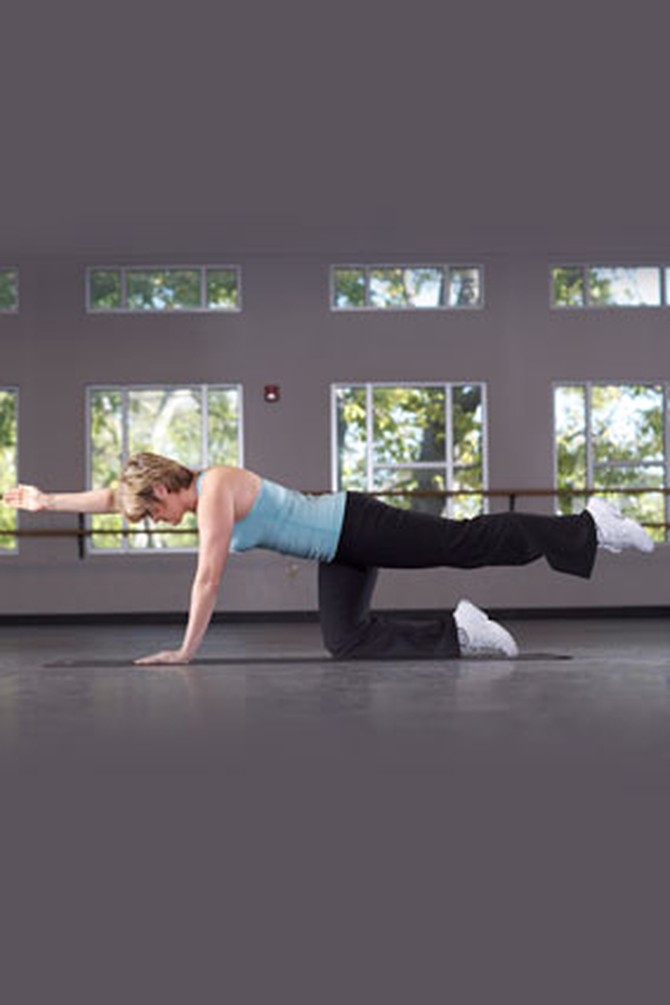
Image: Courtesy of the American Council on Exercise (ACE)
Must-Know Exercise 4: The Bird Dog
Why: Even regular gym-goers tend to forget about their back—until it starts to ache, says Garber. She adds that data suggests poor posture (like when you hunch over your laptop) can cause an imbalance between the strength of your abs and your back muscles, which can lead to pain.
Do: Start on your hands and knees, with your knees directly under the hips and your hands beneath your shoulders. Brace your core. Point your left arm in front of you at the same time as you straighten the right leg behind you. Hold for eight seconds and then switch.
Don't: Matthews says that when people lift one leg, they often turn out that same hip. Engaging the core can help keep you level, and so can lifting the leg just to hip height.
Do: Start on your hands and knees, with your knees directly under the hips and your hands beneath your shoulders. Brace your core. Point your left arm in front of you at the same time as you straighten the right leg behind you. Hold for eight seconds and then switch.
Don't: Matthews says that when people lift one leg, they often turn out that same hip. Engaging the core can help keep you level, and so can lifting the leg just to hip height.
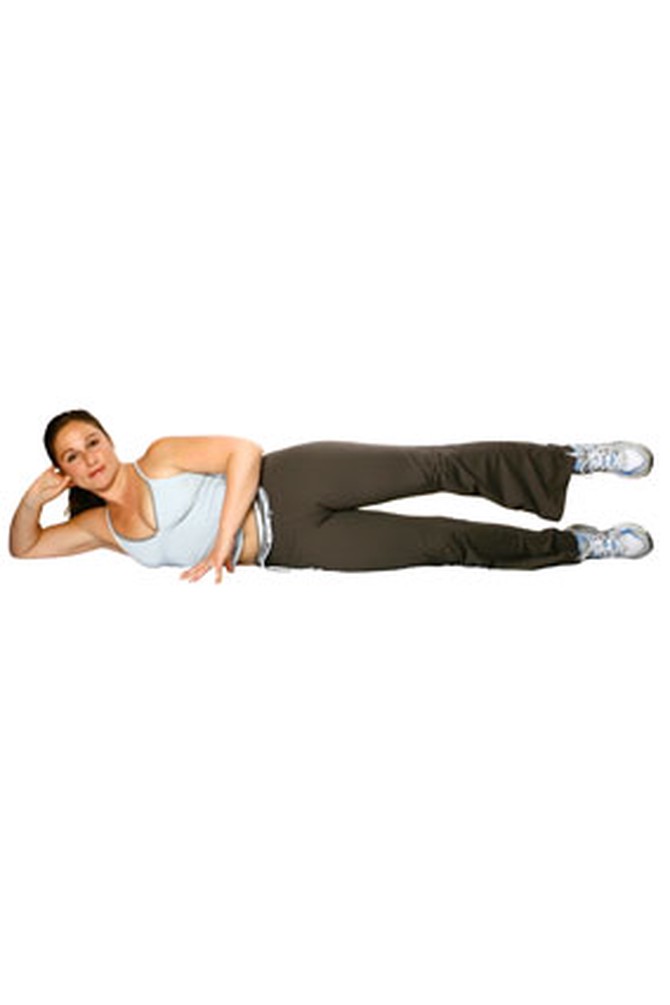
Photo: Thinkstock
Must-Know Exercise 5: Side-Lying Leg Raises
Why: "The hips, back and abs are all related, and keeping them strong and flexible helps prevent injury," says Garber. Leg raises may remind you of '80s workout videos, but they're still one of the best ways to target the hips and outer thighs.
Do: Lie on your side with your legs stacked and your head resting on your arm. Tighten the muscle in the front of the top thigh and lift that leg into the air. Hold for one count, lower to touch the bottom leg and then lift again. You can also use ankle weights or a resistance band.
Don't: Matthews says she often sees clients curved into the letter C, with their feet and torso creeping forward from the hinge of their hips. Stay straight from your head to your toes. Also resist lifting your top leg way up in the air. "There are no bonus points for extra height," says Matthews. (After about 45 degrees, the hip is no longer the focus, and other muscles take over.)
Do: Lie on your side with your legs stacked and your head resting on your arm. Tighten the muscle in the front of the top thigh and lift that leg into the air. Hold for one count, lower to touch the bottom leg and then lift again. You can also use ankle weights or a resistance band.
Don't: Matthews says she often sees clients curved into the letter C, with their feet and torso creeping forward from the hinge of their hips. Stay straight from your head to your toes. Also resist lifting your top leg way up in the air. "There are no bonus points for extra height," says Matthews. (After about 45 degrees, the hip is no longer the focus, and other muscles take over.)
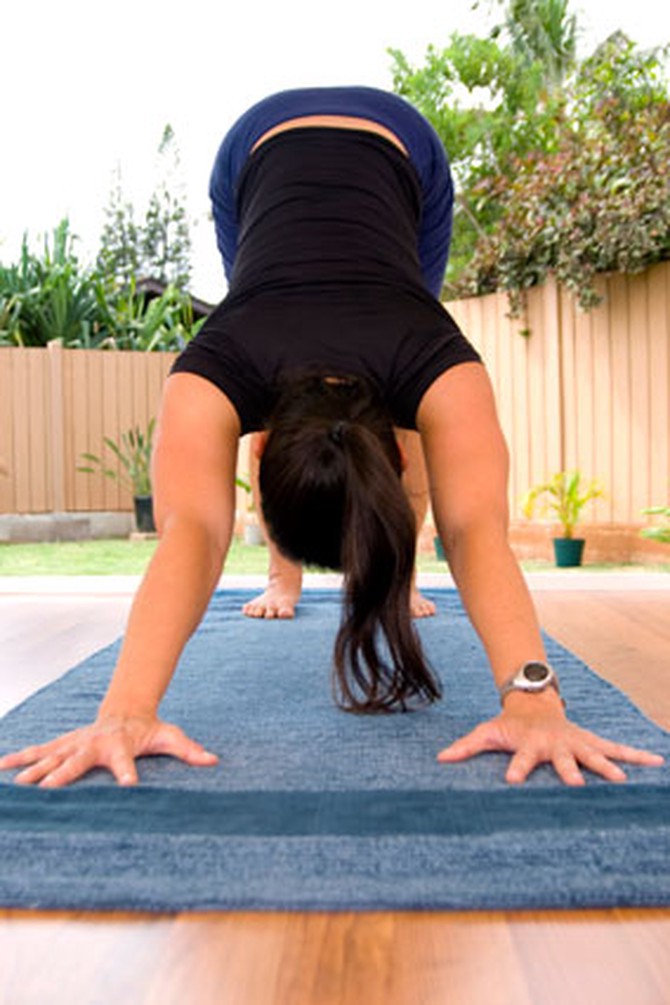
Photo: Thinkstock
Must-Know Exercise 6: Downward Dog
Why: Garber says that all athletes are prone to tight Achilles tendons, and that goes double for women who regularly wear heels.
Do: From the plank, with your palms flat on the ground and your feet hip-width apart, lift your hips up and back until your body is in the shape of an upside-down V. Reach your heels toward the ground. Relax your head and neck, and stay in this position for five deep breaths. Return to plank and lower yourself to the ground.
Don't: People tend to concentrate so hard on keeping their legs straight that they curve their back, says Matthews, who also teaches yoga. "It's okay to slightly bend the legs as long as the back stays flat," she says. Another tip: Turn the inside of your elbows toward the front of the room. "This will protect the shoulders from rotating inward—something we get enough of while typing and driving," says Matthews.
Keep Reading
Exercises you think you need—but don't
Do: From the plank, with your palms flat on the ground and your feet hip-width apart, lift your hips up and back until your body is in the shape of an upside-down V. Reach your heels toward the ground. Relax your head and neck, and stay in this position for five deep breaths. Return to plank and lower yourself to the ground.
Don't: People tend to concentrate so hard on keeping their legs straight that they curve their back, says Matthews, who also teaches yoga. "It's okay to slightly bend the legs as long as the back stays flat," she says. Another tip: Turn the inside of your elbows toward the front of the room. "This will protect the shoulders from rotating inward—something we get enough of while typing and driving," says Matthews.
Keep Reading
Exercises you think you need—but don't
Published 01/04/2012

